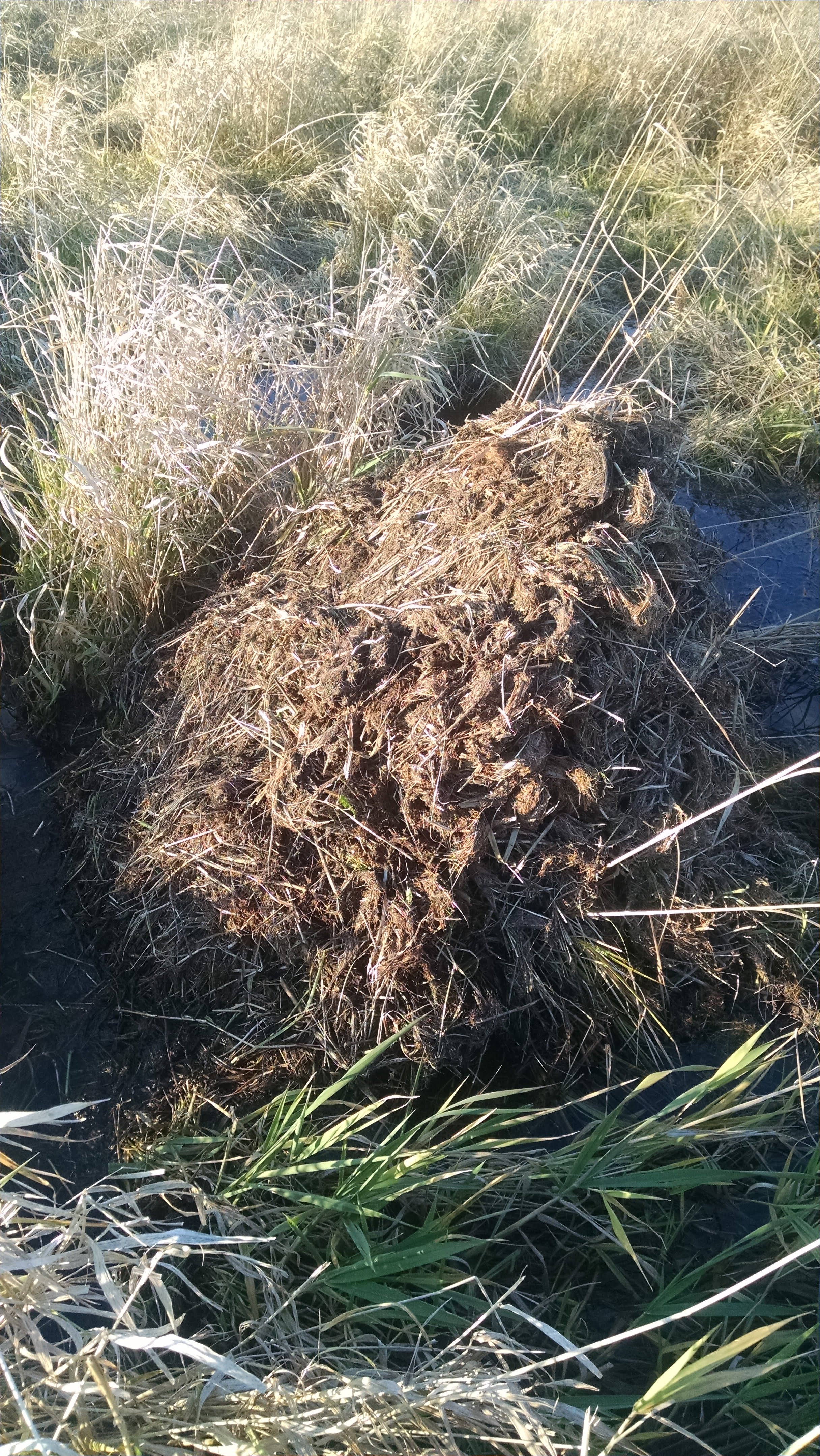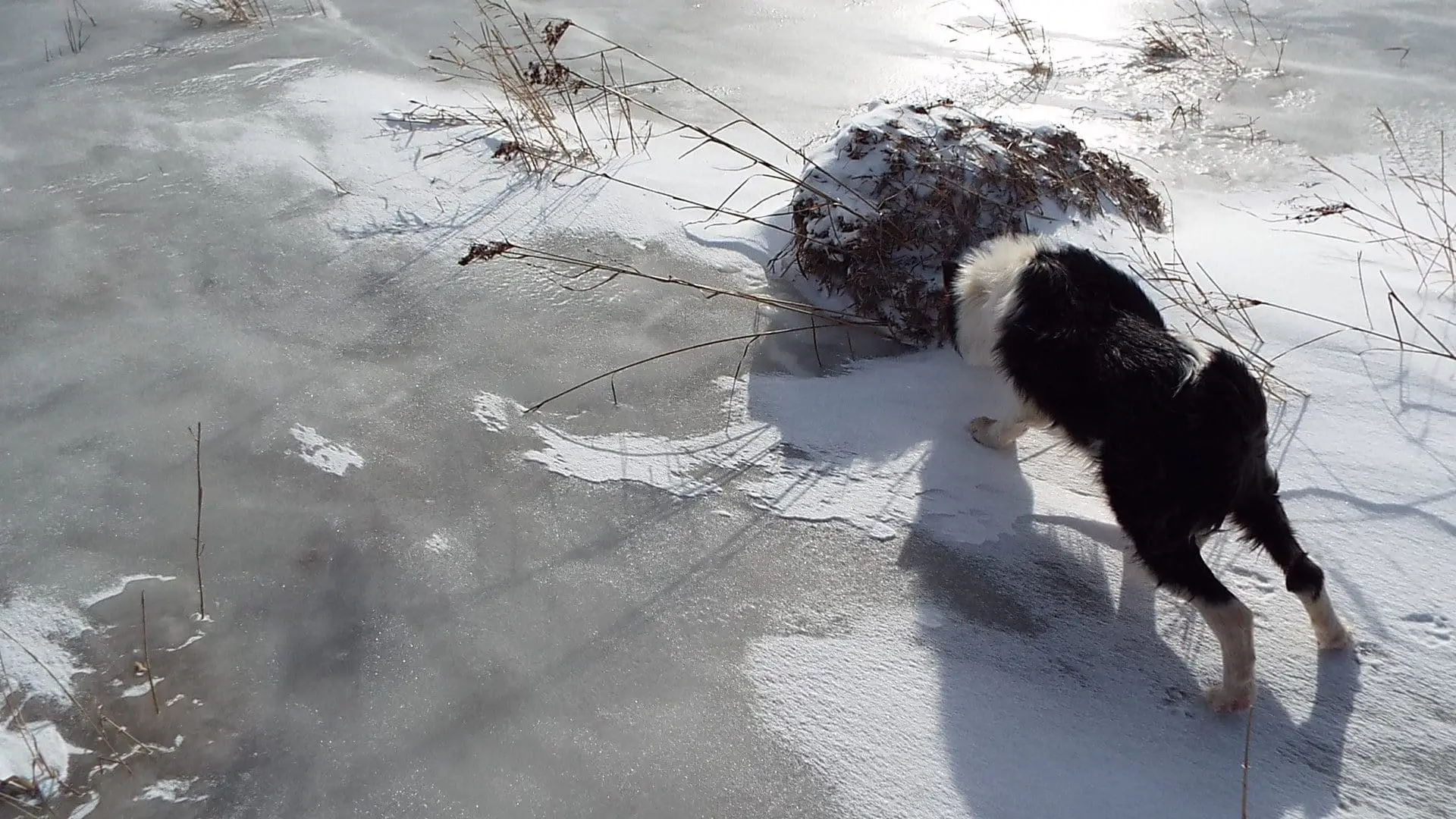A stream flows out of the cattail marsh next door bisecting our land. There have always been signs of muskrat activity in the marsh, but never on our side. This year we have two new muskrat structures built in our part of the stream.
Muskrats aren’t true rats, although they look like swollen, long haired rats. They live in slow flowing streams, ponds, and swamps, feeding on aquatic plants (although they will readily eat cultivated crops if available) and small wetlands animals (amphibians, crustaceans, and fish). They are pretty good at avoiding contact with humans, but they are said to be fierce biters and scratchers if cornered. We wouldn’t know; we never get that close…

They build several types of structures for housing and feeding. Most of their construction happens in the fall. In flat areas they build elevated lodges, rest stops, and feed dens out of cattails, reeds, and other aquatic plants. They typically have water-level or underwater entrances leading upward to dry chambers. They can become pests when they build their dens in embankments and dams. Their burrowing weakens dams, undermines culverts, and can lead to total structural failure if left unchecked.

When we build our new pond the muskrats will be eager to undermine it, so we intend to build in a drain to lower the water level each fall to discourage muskrat activity and to expose any new tunneling. A neighbor traps muskrats and gets a few dollars for each pelt, so trapping will also be part of the strategy for mitigating muskrat damage. Muskrats are so prolific that trapping is usually insufficient to eliminate them, but it can keep populations at manageable levels.

2 thoughts on “Muskrats Move In”
I’ll take a muskrat coat when you eliminate enough of them!
With weather like this, we’re thinking a muskrat ushanka would be nice.